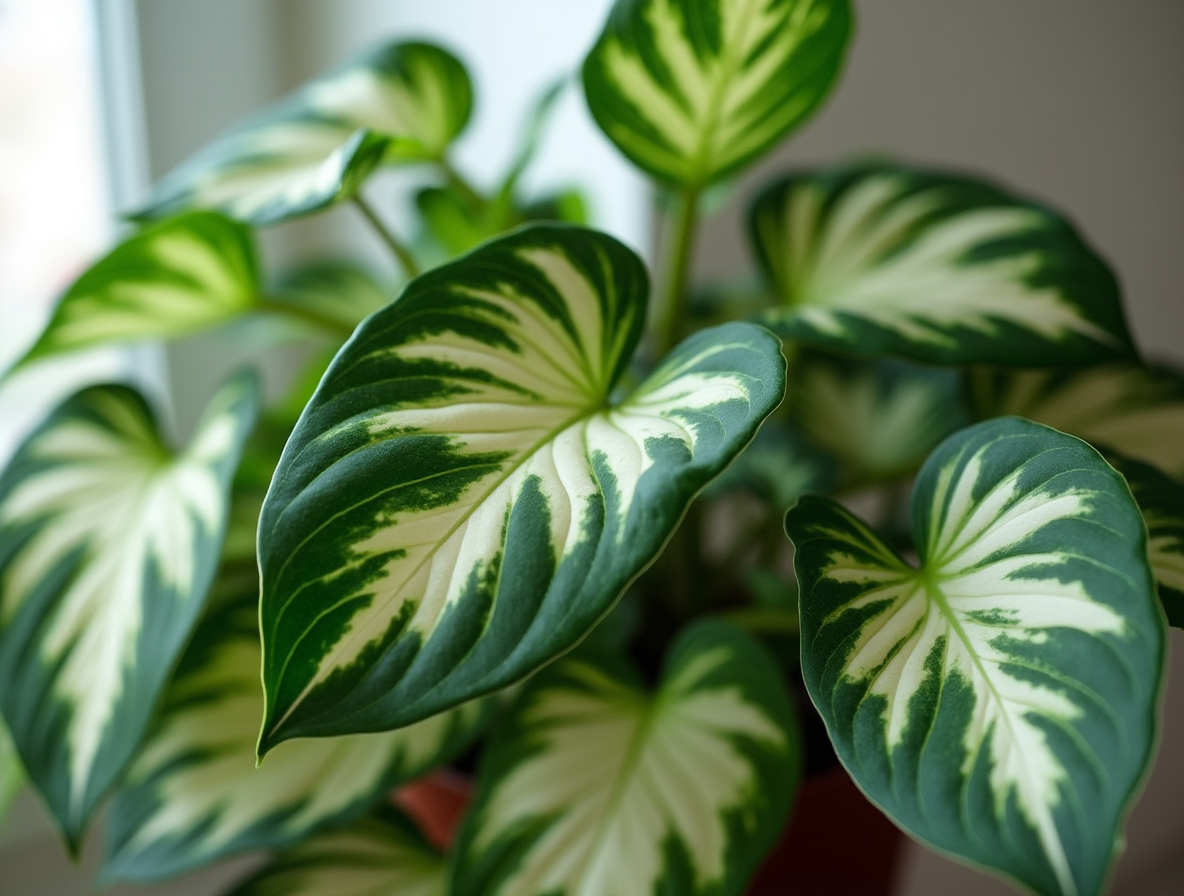How to Care for Snow Queen Pothos: Tips for Thriving Growth Indoors
Snow Queen Pothos, scientifically known as Epipremnum aureum, is an exquisite yet low maintenance houseplant beloved among indoor plant enthusiasts worldwide. Boasting exquisite white- and green marbled leaves that resemble granite countertops, Snow Queen Pothos makes an excellent addition to the houseplant collection of novice gardeners as well as more experienced plant lovers looking for air purifying qualities in their houseplant collection.
This comprehensive guide offers everything you need to know to care for a Snow Queen Pothos plant successfully, including understanding its light, soil and water needs and propagation needs. By becoming adept in its care you’re set on becoming an expert at keeping this gorgeous flower healthy and vibrant!
Why Choose Snow Queen Pothos?
Before diving in with care tips for Snow Queen Pothos plants, it’s worth understanding their popularity among plant enthusiasts:
- Aesthetic Appeal: With its distinct white variegation and green foliage, this plant makes an impressionful statement in any indoor garden setting.
- Air-Purifying: Like its pothos ancestors, this plant helps provide cleaner indoor air by filtering out pollutant particles through its leaves and flowers and eliminating them through transpiration.
- Low-Maintenance: With their minimal care needs and forgiving nature, succulents make an excellent option for busy plant parents or newcomers to indoor gardening.
- Flexible Placement: Snow Queen Pothos makes itself at home in any setting – be it hanging pot, climbing trellis or shelf!
No matter whether it’s for decorating an elegant living space or adding greenery to an office environment, a plant elevates indoor aesthetics effortlessly.
Key Care Tips for Snow Queen Pothos
1. Choosing the Right Light
Snow Queen Pothos thrives best under indirect light conditions. To preserve vibrant white and green leaves, however, direct sun should reach their foliage at various intervals to avoid scorch marks forming quickly! Direct sun may scorch delicate plant stems quickly!

Ideal Light Conditions:
- Position BESPOT in an east-facing window to achieve gentle morning illumination.
- Use sheer curtains to help diffuse harsh sunlight coming through south-facing windows and reduce their intensity.
- Low light areas could produce less variance over time.
Pro Tip: If the Snow Queen Pothos in your space seems to have lost some of its white hue, try moving it somewhere brighter for optimal light exposure.
2. Best Soil for Pothos Plants
A well-draining potting mix is crucial to prevent waterlogged roots, which can lead to root rot—a common issue with pothos plants.

Recommended Soil Mix:
- Combine equal parts standard potting soil, perlite, and peat moss for optimal drainage and aeration.
- Consider purchasing pre-formulated houseplant and tropical plant feed mixes instead.
Make sure your pot has drainage holes to allow excess moisture to escape and maintain healthy roots.
3. Watering Schedule for Pothos
This plant prefers soil that remains slightly damp without becoming saturated, to avoid overwatering which could harm its roots and overdrying which may result in leaves withering away and stems blooming prematurely.

When to Water:
- When should I water? : Water when the top one to two inches of soil feel dry to touch
- Reduce watering frequency during cooler months as plant growth tends to be reduced at lower temperatures.
Signs of Improper Watering:
- Yellow leaves indicate overwatering.
- Wilting and crispy leaves indicate flooding conditions.
4. Humidity Levels for Snow Queen Pothos
Snow Queen Pothos plants thrive when exposed to humidity levels of between 40%-60%; to replicate its native habitat, make sure the indoor humidity falls between this range.

Simple Ways to Boost Humidity:
- Install a small humidifier into the room for improved humidity regulation.
- Place the container onto a pebble tray filled with water.
- Group your pothos plant with other houseplants that thrive in humidity for maximum effect.
Though adapting well to standard home humidity conditions, extra moisture will keep leaves lush and healthy.
5. Fertilizing for Thriving Growth
To encourage vigorous growth and beautiful variegation, feed your plant with a balanced, water-soluble fertilizer.

Fertilizer Tips:
- Apply fertilizers regularly throughout the growing season (spring and summer).
- Avoid overfertilization as this could result in excess salts being present in your soil, potentially leading to salt build-up and leaf burn.
Select houseplant fertilizers specifically tailored for houseplants for optimal results.
6. Pruning and Maintenance
Pruning is essential in order to preserve and expand bushier growth of any plant.

How to Prune:
- Use clean and sharp scissors to trim back leggy or yellowing vines.
- Trim just above any node (where leaves develop) to stimulate new growth and spur on renewal of plants.
Pruning can help manage plant size and maintain its appearance in an orderly way.
7. Snow Queen Pothos Propagation
One of the great joys of owning Snow Queen Pothos plants is how easy their propagation can be – sharing cuttings among friends or expanding indoor collections has never been simpler!

Propagation Steps:
- To initiate propagation, cut healthy vines just below their nodes with sterilized scissors in order to initiate propagation.
- Place the cutting in a glass jar filled with water, making sure that at least one node submerges below its depths.
- Keep the jar in a place with bright but indirect lighting and replace its water every few days.
- Once roots reach 2-3 inches in length, transplant them by moving your cutting to a container with well-draining soil for transplanting.
Propagation not only adds beauty and diversity to your landscape but it can be considered an investment plan for original plants!
Common Problems with Snow Queen Pothos
Even succulent plants with their tough nature sometimes face challenges that need addressing, here is how:

- Yellowing Leaves:
- Overwatering could be to blame; make adjustments accordingly in order to promote optimal plant growth and health.
- Browning Edges:
- They may indicate low humidity levels or underwatering.
- Pests:
- Look for signs of spider mites or aphids. Treat infestations with an insecticidal soap or neem oil.
Action taken as soon as possible will ensure a long and flourishing plant.
Bringing Snow Queen Pothos into Your Home
Snow Queen Pothos houseplants add more than aesthetic value; their presence adds vitality and warmth to any indoor environment. By following our care tips here, you’ll master their care and unlock its full thriving potential.
Snow Queen Pothos makes an easy introduction or expansion of an indoor garden, whether that means starting fresh or adding on to existing arrangements. Hang it from a hanging pot for maximum visual impact or let its vines climb a trellis for even greater visual impact.
FAQ Section
Q1. Is Snow Queen Pothos the same as Marble Queen Pothos?
No, while they are similar, This plant has more pronounced white variegation compared to the creamier tones of Marble Queen Pothos.
Q2. Can Snow Queen Pothos grow in low light?
Yes, it can survive in low light, but the vibrant white variegation may fade without sufficient indirect sunlight.
Q3. How often should I water Snow Queen Pothos?
Water only when the top 1–2 inches of soil are dry to avoid overwatering.
Q4. How do I choose the best pot for my Snow Queen Pothos?
Select a pot with drainage holes to prevent waterlogging. Hanging pots work well to showcase its cascading vines.
Q5. What’s the best way to make my Snow Queen Pothos grow faster?
Provide bright, indirect sunlight, use well-draining soil, and fertilize monthly during the growing season for optimal growth.




